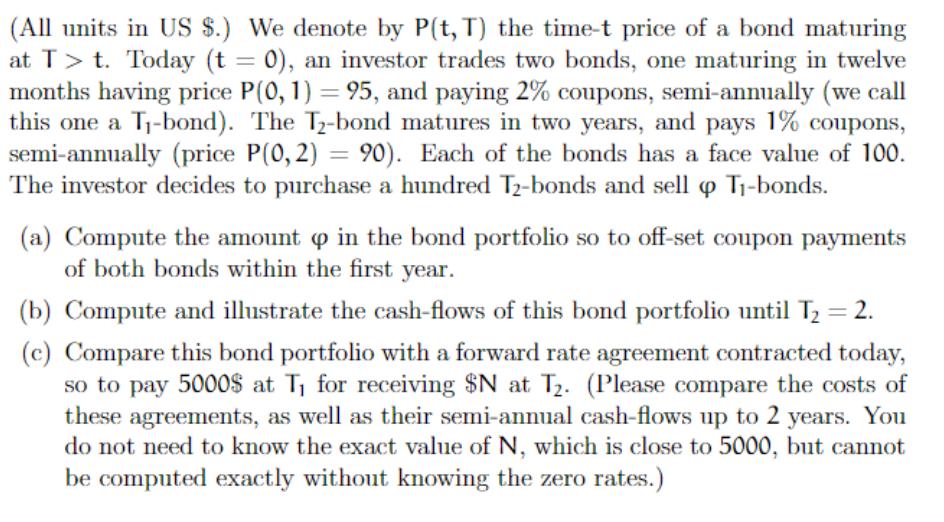Answered step by step
Verified Expert Solution
Question
1 Approved Answer
(All units in US $.) We denote by P(t, T) the time-t price of a bond maturing at T> t. Today (t = 0),

(All units in US $.) We denote by P(t, T) the time-t price of a bond maturing at T> t. Today (t = 0), an investor trades two bonds, one maturing in twelve months having price P(0, 1) = 95, and paying 2% coupons, semi-annually (we call this one a T-bond). The T-bond matures in two years, and pays 1% coupons, semi-annually (price P(0, 2) = 90). Each of the bonds has a face value of 100. The investor decides to purchase a hundred T2-bonds and sell o T-bonds. (a) Compute the amount op in the bond portfolio so to off-set coupon payments of both bonds within the first year. (b) Compute and illustrate the cash-flows of this bond portfolio until T = 2. (c) Compare this bond portfolio with a forward rate agreement contracted today, so to pay 5000$ at T for receiving $N at T. (Please compare the costs of these agreements, as well as their semi-annual cash-flows up to 2 years. You do not need to know the exact value of N, which is close to 5000, but cannot be computed exactly without knowing the zero rates.)
Step by Step Solution
★★★★★
3.39 Rating (158 Votes )
There are 3 Steps involved in it
Step: 1

Get Instant Access to Expert-Tailored Solutions
See step-by-step solutions with expert insights and AI powered tools for academic success
Step: 2

Step: 3

Ace Your Homework with AI
Get the answers you need in no time with our AI-driven, step-by-step assistance
Get Started


